 |
by Melissa Heikkilä on (#6M09W)
Silent. Rigid. Clumsy. Henry and Jane Evans are used to awkward houseguests. For more than a decade, the couple, who live in Los Altos Hills, California, have hosted a slew of robots in their home. In 2002, at age 40, Henry had a massive stroke, which left him with quadriplegia and an inability to speak....
|
MIT Technology Review
| Link | https://www.technologyreview.com/ |
| Feed | https://www.technologyreview.com/stories.rss |
| Updated | 2025-12-18 13:48 |
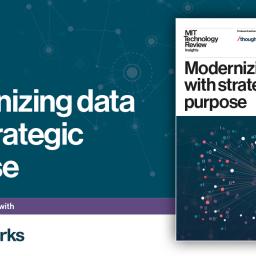 |
by MIT Technology Review Insights on (#6KZJY)
Data modernization is squarely on the corporate agenda. In our survey of 350 senior data and technology executives, just over half say their organization has either undertaken a modernization project in the past two years or is implementing one today. An additional one-quarter plan to do so in the next two years. Other studies also...
|
 |
by Rhiannon Williams on (#6KZJZ)
This is today's edition ofThe Download,our weekday newsletter that provides a daily dose of what's going on in the world of technology. Generative AI can turn your most precious memories into photos that never existed As a six-year-old growing up in Barcelona, Spain, during the 1940s, Maria would visit a neighbor's apartment in her building...
|
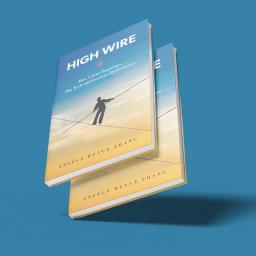 |
by Zeyi Yang on (#6KZDY)
This story first appeared in China Report, MIT Technology Review's newsletter about technology in China.Sign upto receive it in your inbox every Tuesday. If you're a longtime subscriber to this newsletter, you know that I talk about China's tech policies all the time. To me, it's always a challenge to understand and explain the government's...
|
 |
by Will Douglas Heaven on (#6KZDZ)
Maria grew up in Barcelona, Spain, in the 1940s. Her first memories of her father are vivid. As a six-year-old, Maria would visit a neighbor's apartment in her building when she wanted to see him. From there, she could peer through the railings of a balcony into the prison below and try to catch a...
|
 |
by Elana Wilner on (#6KZ12)
The views expressed in this video are those of the speakers, and do not represent any endorsement or sponsorship. Is the open-source approach, which has democratized access to software, ensured transparency, and improved security for decades, now poised to have a similar impact on AI? We dissect the balance between collaboration and control, legal ramifications,...
|
 |
by MIT Technology Review Insights on (#6KYVD)
Few technological advances have generated as much excitement as AI. In particular, generative AI seems to have taken business discourse to a fever pitch. Many manufacturing leaders express optimism: Research conducted by MIT Technology Review Insights found ambitions for AI development to be stronger in manufacturing than in most other sectors. Manufacturers rightly view AI...
|
 |
by Rhiannon Williams on (#6KYMP)
This is today's edition ofThe Download,our weekday newsletter that provides a daily dose of what's going on in the world of technology. Why the Chinese government is sparing AI from harsh regulations-for now The way China regulates its tech industry can seem highly unpredictable. The government can celebrate the achievements of Chinese tech companies one...
|
 |
by Zeyi Yang on (#6KYE7)
The way China regulates its tech industry can seem highly unpredictable. The government can celebrate the achievements of Chinese tech companies one day and then turn against them the next. But there are patterns in how China approaches regulating tech, argues Angela Huyue Zhang, a law professor at Hong Kong University and author of the...
|
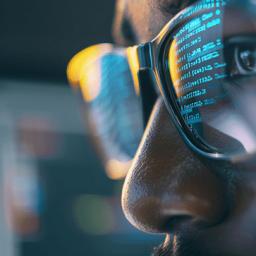 |
by Ken Mugrage on (#6KXXQ)
Forget Skynet: One of the biggest risks of AI is your organization's reputation. That means it's time to put science-fiction catastrophizing to one side and begin thinking seriously about what AI actually means for us in our day-to-day work. This isn't to advocate for navel-gazing at the expense of the bigger picture: It's to urge...
|
 |
by Rhiannon Williams on (#6KXQK)
This is today's edition ofThe Download,our weekday newsletter that provides a daily dose of what's going on in the world of technology. A conversation with Drago Tudorache, the politician behind the AI Act Drago Tudorache is one of the most important players in European AI policy. He is one of the two lead negotiators of...
|
 |
by Melissa Heikkilä on (#6KXK6)
This story originally appeared in The Algorithm, our weekly newsletter on AI. To get stories like this in your inbox first, sign up here. Drago Tudorache is feeling pretty damn good. We're sitting in a conference room in a chateau overlooking a lake outside Brussels, sipping glasses of cava. The Romanian liberal member of the...
|
 |
by Rhiannon Williams on (#6KW01)
This is today's edition ofThe Download,our weekday newsletter that provides a daily dose of what's going on in the world of technology. How to safely watch and photograph the total solar eclipse On April 8, the moon will pass directly between Earth and the sun, creating a total solar eclipse across much of the United...
|
 |
by Cassandra Willyard on (#6KVXQ)
This article first appeared in The Checkup, MIT Technology Review's weekly biotech newsletter. To receive it in your inbox every Thursday, and read articles like this first, sign up here. A dairy worker in Texas tested positive for avian influenza this week. This new human case of bird flu-the second ever reported in the United...
|
 |
by Rhiannon Williams on (#6KVW0)
On April 8, the moon will pass directly between Earth and the sun, creating a total solar eclipse across much of the United States, Mexico, and Canada. Although total solar eclipses occur somewhere in the world every 18 months or so, this one is unusual because tens of millions of people in North America will...
|
 |
by Rhiannon Williams on (#6KV2X)
This is today's edition ofThe Download,our weekday newsletter that provides a daily dose of what's going on in the world of technology. The hard lessons of Harvard's failed geoengineering experiment In March 2017, at a small summit in Washington, DC, two Harvard professors, David Keith and Frank Keutsch, laid out plans to conduct what would...
|
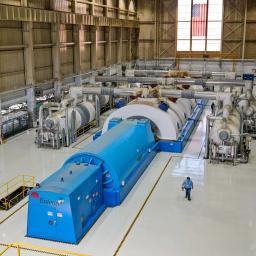 |
by Casey Crownhart on (#6KV0J)
This article is from The Spark, MIT Technology Review's weekly climate newsletter. To receive it in your inbox every Wednesday, sign up here. Aging can be scary. As you get older, you might not be able to do everything you used to, and it can be hard to keep up with the changing times. Just...
|
 |
by James Temple on (#6KV0K)
In late March of 2017, at a small summit in Washington, DC, two Harvard professors, David Keith and Frank Keutsch, laid out plans to conduct what would have been the first solar geoengineering experiment in the stratosphere. Instead, it became the focal point of a fierce public debate over whether it's okay to research such...
|
 |
by Rhiannon Williams on (#6KT7Y)
This is today's edition ofThe Download,our weekday newsletter that provides a daily dose of what's going on in the world of technology. The race to fix space-weather forecasting before next big solar storm hits As the number of satellites in space grows, and as we rely on them for increasing numbers of vital tasks on...
|
 |
by Casey Crownhart on (#6KT68)
A shut-down nuclear power plant in Michigan could get a second life thanks to a $1.52 billion loan from the US Department of Energy. If successful, it will be the first time a shuttered nuclear power plant reopens in the US. Palisades Power Plant shut down on May 20, 2022, after 50 years of generating...
|
 |
by Zeyi Yang on (#6KT69)
This story first appeared in China Report, MIT Technology Review's newsletter about technology in China.Sign upto receive it in your inbox every Tuesday. Like most reporters, I have accounts on every social media platform you can think of. But for the longest time, I was not on Threads, the rival to X (formerly Twitter) released...
|
 |
by Tereza Pultarova on (#6KT42)
Tzu-Wei Fang will always remember February 3, 2022. It was a Thursday just after Groundhog Day, and Fang, a physicist born in Taiwan, was analyzing satellite images of a cloud of charged particles that had erupted from the sun. The incoming cloud was a coronal mass ejection, or CME-essentially a massive burst of magnetized plasma...
|
 |
by MIT Technology Review Insights on (#6KSES)
In the bygone era of contact centers, the customer experience was tethered to a singular channel-the phone call. The journey began with a pre-recorded message prompting the customer to press a number corresponding to their query. Today's contact centers have evolved from the confines of just traditional phone calls to multiple channels from emails to...
|
 |
by Rhiannon Williams on (#6KSBY)
This is today's edition ofThe Download,our weekday newsletter that provides a daily dose of what's going on in the world of technology. How ASML took over the chipmaking chessboard On a drab Monday February morning in California, at the drab San Jose Convention Center, attendees of the SPIE Advanced Lithography and Patterning Conference gathered to...
|
 |
by Zeyi Yang on (#6KS9X)
For most people around the world, Meta's text-based social network Threads is a platform that they haven't thought of for months. But for Liu, a design professional in Taipei, it's where she's receiving unprecedented attention. My casual posts often receive a large number of reposts now. It used to only happen every few months on...
|
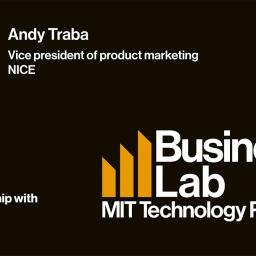 |
by MIT Technology Review Insights on (#6KRNS)
Today, interactions matter more than ever. According to data compiled by NICE, once a consumer makes a buying decision for a product or service, 80% of their decision to keep doing business with that brand hinges on the quality of their customer service experience, according to NICE research. Enter AI. I think AI is becoming...
|
 |
by Mat Honan, James O'Donnell on (#6KRKC)
On a drab Monday morning in San Jose, California, at the drab San Jose Convention Center, attendees of the SPIE Advanced Lithography and Patterning Conference filed into the main ballroom until all the seats were taken and the crowd began to line the walls along the back and sides of the room. The convention brings...
|
 |
by Will Douglas Heaven on (#6KQ47)
Alex Reben's work is often absurd, sometimes surreal: a mash-up of giant ears imagined by DALL-E and sculpted by hand out of marble; critical burns generated by ChatGPT that thumb the nose at AI art. But its message is relevant to everyone. Reben is interested in the roles humans play in a world filled with...
|
 |
by Melissa Heikkilä on (#6KQ48)
Watermarks for AI-generated text are easy to remove and can be stolen and copied, rendering them useless, researchers have found. They say these kinds of attacks discredit watermarks and can fool people into trusting text they shouldn't. Watermarking works by inserting hidden patterns in AI-generated text, which allow computers to detect that the text comes...
|
 |
by Antonio Regalado on (#6KPXF)
This article first appeared in The Checkup, MIT Technology Review's weekly biotech newsletter. To receive it in your inbox every Thursday, and read articles like this first, sign up here. Justin Graves was managing a scuba dive shop in Louisville, Kentucky, when he first had a seizure. He was talking to someone and suddenly the...
|
 |
by Rhiannon Williams on (#6KP7H)
This is today's edition ofThe Download,our weekday newsletter that provides a daily dose of what's going on in the world of technology. What's next for generative video When OpenAI revealed its new generative video model, Sora, last month, it invited a handful of filmmakers to try it out. This week the company published the results:...
|
 |
by Will Douglas Heaven on (#6KP7J)
In the last month, a handful of filmmakers have taken Sora for a test drive. The results, which OpenAI published this week, are amazing. The short films are a big jump up even from the cherry-picked demo videos that OpenAI used to tease its new generative model just six weeks ago. Here's how three of...
|
 |
by Will Douglas Heaven on (#6KP5C)
MIT Technology Review's What's Next series looks across industries, trends, and technologies to give you a first look at the future. You can read the rest of them here. When OpenAI revealed its new generative video model, Sora, last month, it invited a handful of filmmakers to try it out. This week the company published...
|
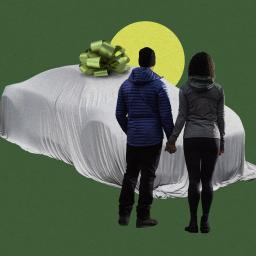 |
by Casey Crownhart on (#6KP3C)
This article is from The Spark, MIT Technology Review's weekly climate newsletter. To receive it in your inbox every Wednesday, sign up here. If you've ever eaten at a fusion restaurant or seen an episode of Glee, you know a mashup can be a wonderful thing. Plug-in hybrid vehicles should be the mashup that the...
|
 |
by Rhiannon Williams on (#6KNAS)
This is today's edition ofThe Download,our weekday newsletter that provides a daily dose of what's going on in the world of technology. The problem with plug-in hybrids? Their drivers. Plug-in hybrids are supposed to be the best of both worlds-the convenience of a gas-powered car with the climate benefits of a battery electric vehicle. But...
|
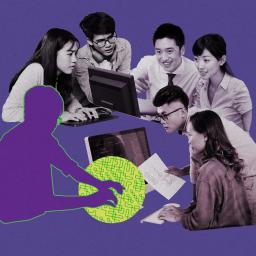 |
by Zeyi Yang on (#6KN61)
This story first appeared in China Report, MIT Technology Review's newsletter about technology in China.Sign upto receive it in your inbox every Tuesday. In 2019, MIT Technology Review covered a report that shined a light on how fast China's AI talent pool was growing. Its main finding was pretty interesting: the number of elite AI...
|
 |
by Casey Crownhart on (#6KN62)
Plug-in hybrids are supposed to be the best of both worlds-the convenience of a gas-powered car with the climate benefits of a battery electric vehicle. But new data suggests that some official figures severely underestimate the emissions they produce. According to new real-world driving data from the European Commission, plug-in hybrids produce roughly 3.5 times...
|
 |
by Rhiannon Williams on (#6KMM7)
Crafting a good-tasting beer is a difficult task. Big breweries select hundreds of trained tasters from among their employees to test their new products. But running such sensory tasting panels is expensive, and perceptions of what tastes good can be highly subjective. What if artificial intelligence could help lighten the load? New AI models can...
|
 |
by Rhiannon Williams on (#6KMDG)
This is today's edition ofThe Download,our weekday newsletter that provides a daily dose of what's going on in the world of technology. How Adobe's bet on non-exploitative AI is paying off Since the beginning of the generative AI boom, there has been a fight over how large AI models are trained. In one camp sit...
|
 |
by Melissa Heikkilä on (#6KMB2)
This story originally appeared in The Algorithm, our weekly newsletter on AI. To get stories like this in your inbox first, sign up here. The UK is home to AI powerhouse Google DeepMind, a slew of exciting AI startups, and some of the world's best universities. It's also where I live, along with quite a...
|
 |
by Melissa Heikkilä on (#6KM8Y)
Since the beginning of the generative AI boom, there has been a fight over how large AI models are trained. In one camp sit tech companies such as OpenAI that have claimed it is impossible" to train AI without hoovering the internet of copyrighted data. And in the other camp are artists who argue that...
|
 |
by Rhiannon Williams on (#6KKGS)
This is today's edition ofThe Download,our weekday newsletter that provides a daily dose of what's going on in the world of technology. The tech industry can't agree on what open source AI means. That's a problem. Suddenly, open source" is the latest buzzword in AI circles. Meta has pledged to create open-source artificial general intelligence....
|
 |
by Alli Chase on (#6KKEB)
|
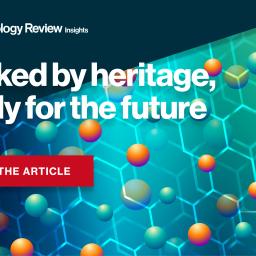 |
by Alli Chase on (#6KKEC)
|
 |
by Edd Gent on (#6KKCN)
Suddenly, open source" is the latest buzzword in AI circles. Meta has pledged to create open-source artificial general intelligence. And Elon Musk is suing OpenAI over its lack of open-source AI models. Meanwhile, a growing number of tech leaders and companies are setting themselves up as open-source champions. But there's a fundamental problem-no one can...
|
 |
by James O'Donnell, Eileen Guo on (#6KJ7C)
Researchers from Apple are probing whether it's possible to use artificial intelligence to detect when a user is speaking to a device like an iPhone, thereby eliminating the technical need for a trigger phrase like Siri," according to a paper published on Friday. In a study, which was uploaded to Arxiv and has not been...
|
 |
by Rhiannon Williams on (#6KHV5)
This is today's edition ofThe Download,our weekday newsletter that provides a daily dose of what's going on in the world of technology. How scientists traced a mysterious covid case back to six toilets This week I have a mystery for you. It's the story of how a team of researchers traced a covid variant in...
|
 |
by Cassandra Willyard on (#6KHPW)
This article first appeared in The Checkup, MIT Technology Review's weekly biotech newsletter. To receive it in your inbox every Thursday, and read articles like this first, sign up here. This week I have a mystery for you. It's the story of how a team of researchers traced a covid variant in Wisconsin from a...
|
 |
by MIT Technology Review on (#6KH9P)
Recorded on March 21, 2024 How China Got Ahead on EVs Speakers: Zeyi Yang, China reporter, Amanda Silverman, Features & investigations editor, and Abby Ivory-Ganja, Sr engagement editor In the race to produce and sell more electric vehicles, China has emerged as the unexpected winner. If you visit Shanghai or Shenzhen today, it feels like...
|
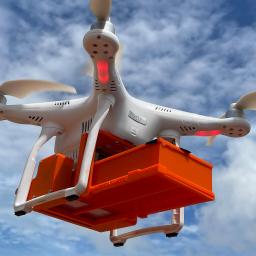 |
by Jill Langlois on (#6KH9Q)
The world is grappling with dengue epidemics, with 100 to 400 million cases worldwide every year, an eightfold increase since 20 years ago, according to the World Health Organization. Much of this is driven by the warming climate, which allows mosquitos to thrive in more areas. A startup in Sao Paulo, Brazil, one of the...
|